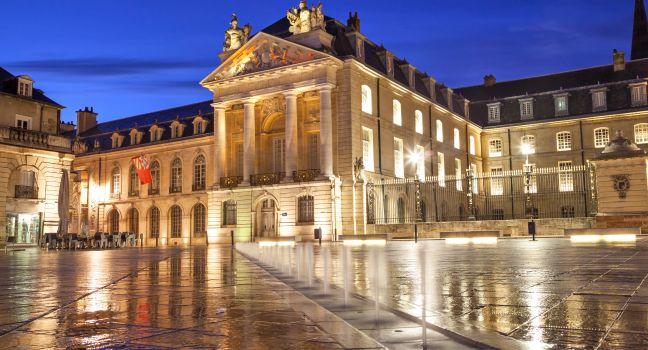Abbaye de Cluny
Founded in the 10th century, the Abbaye de Cluny was the largest church in Europe until the 16th century, when St. Peter's Basilica in Rome was built. Art historians have written themselves into knots tracing the fundamental influence of its architecture in the development of early Gothic style. Cluny's medieval abbots were as powerful as popes; in 1098 Pope Urban II (himself a Cluniac) assured the head of his old abbey that Cluny was the "light of the world." That assertion, of dubious religious validity, did not stand the test of time; after the Revolution the abbey was sold as national property and much of it was used as a stone quarry. Today Cluny stands in ruins, a reminder of the vanity of human grandeur. What remains, however, suggests the size and gorgeous glory of the abbey at its zenith, and piecing it back together in your mind is part of the attraction.
In order to get a clear sense of what you're looking at, start at the Porte d'Honneur, the entrance to the abbey from the village, whose classical architecture is reflected in the pilasters and Corinthian columns of the Clocher de l'Eau-Bénite (a majestic bell tower), crowning the only remaining part of the abbey church, the south transept. Between the two is the reconstructed monumental staircase, which led to the portal of the abbey church, and the excavated column bases of the vast narthex. The entire nave is gone. On one side of the transept is a national horse-breeding center (haras) founded in 1806 by Napoléon and constructed with materials from the destroyed abbey; on the other is an elegant pavilion built as new monks' lodgings in the 18th century. The gardens in front of it once contained an ancient lime tree (destroyed by a 1982 storm) named after Abélard, the controversial philosopher who sought shelter here in 1142. Off to the right is the 13th-century farinier (flour store), with its fine oak-and-chestnut roof and collection of exquisite Romanesque capitals from the vanished choir. The Musée d'Art et d'Archéologie, in the Palais Jean de Bourbon, contains Europe's foremost Romanesque lapidary museum. Vestiges of both the abbey and the village constructed around it are conserved here, as well as part of the Bibliothèque des Moines (Monks' Library).





